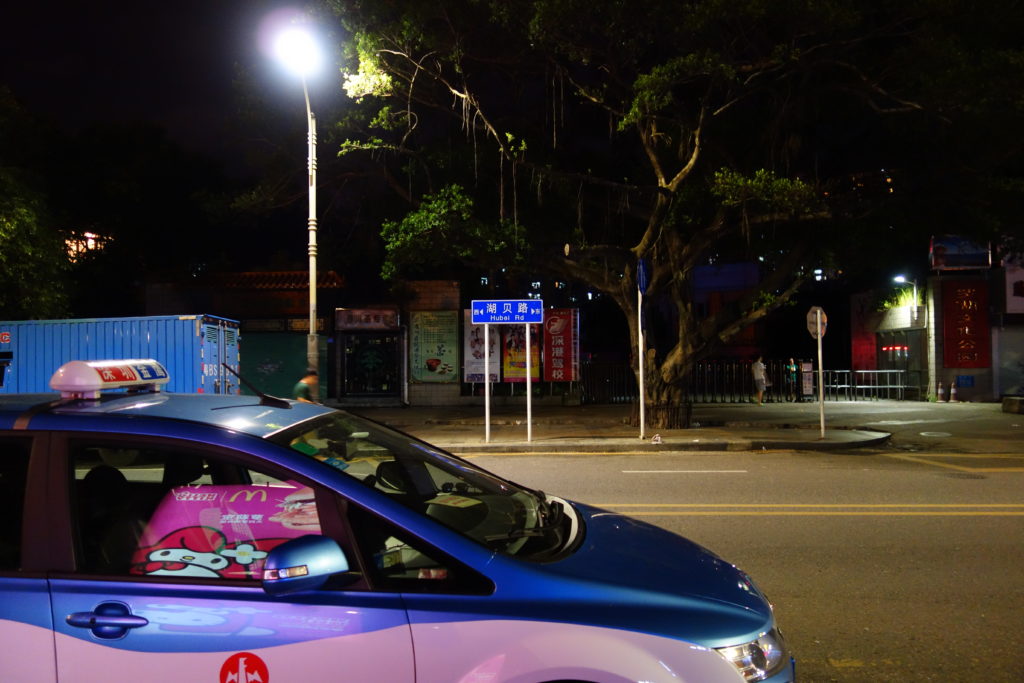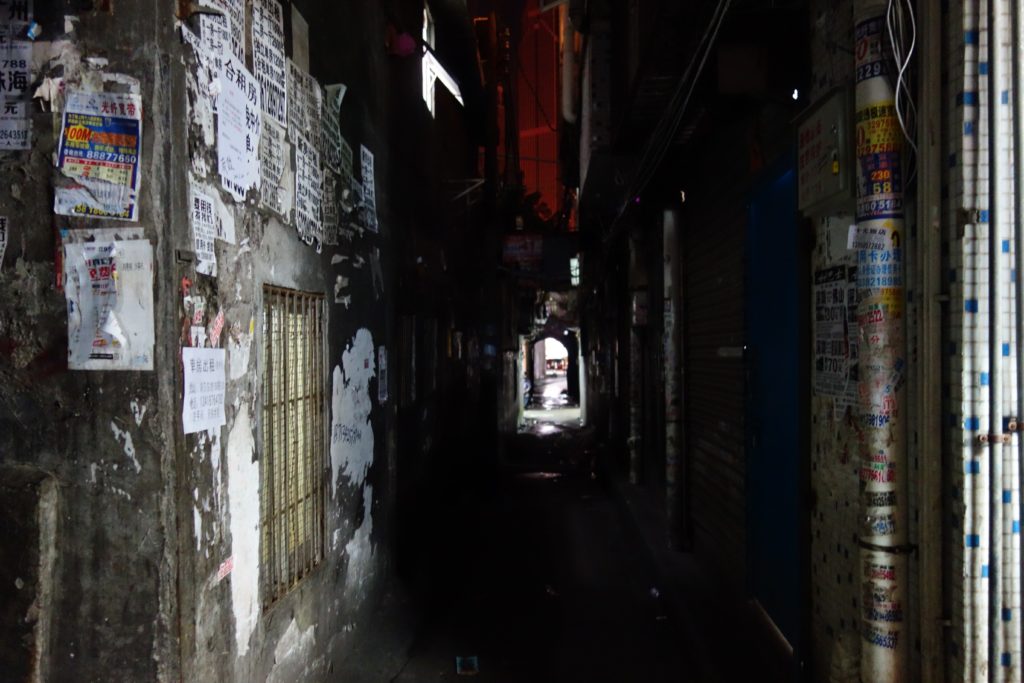By BAILEY BAERWOLF, 7/03/2016. After 17 grueling hours of flights and about another 5 of struggling to get our hands on a hotel room key, we had finally made it to our (temporary) new digs in Luohu, Shenzhen. By the time I laid my head down onto the feather and rice filled pillow it was 4 AM—or 4 PM in New York, where I had just travelled from. When I finally woke, I found Jordenn on his phone and light peering in underneath the curtains into an otherwise dark room. “Oh good, it’s still light outside,” I mumbled to Jordenn. “Yeah…those are streetlights.” It was 9 PM. Waking up to realize I had been asleep for 17 hours was one of the weirdest feelings of my life.
Jordenn and I spent the rest of the evening wandering our neighborhood in search for vegetarian-friendly dining, which lead us to a mango pizza lounge. Don’t ask. Afterwards we continued on our journey throughout Dongmen Subdistrict, a pedestrian street for shopping, without any destination in mind. We eventually came to an alleyway that seemed much more lively than the street we were on, so we naturally followed that path. In doing so, our night took a turn as well.

Instead of being surrounded by lightless H&M’s and unidentifable billboard advertisements, we found ourselves immersed in the vibrant night life of a busy Shenzhen side-street. As the road winded, the buildings inched back from the street little by little, eventually lending the sidewalk space to become full-on plazas consumed by small markets. People selling food from carts and live fish from tanks seemed to be the urban motif of the given area.
As we continued, Jordenn and I never asked each other which way we should walk—we just moved naturally through the space. The street got increasingly smaller as more and more food vendors set up shop in front of businesses that were closed for the night. The formal establishments may not have been serving anyone, but the urban space sure was.
Narrower and narrower the street shrunk, eventually becoming a corridor that packed just as many people, lights, and food as the wider part could. Vinyl canopies enclosed the space at a claustrophobic height, which, at 6’2″, I of course hit my head against a metal pole—not a single person winced or showed any sign of empathy. (A common theme for Jordenn and I thus far has been our ability to attract an incredible amount of attention, but hardly any sustained interest.)
After just a few minutes of walking along the smaller path, everything changed when we reached a fork in the pedestrian-road. The walls seemed to close in even more but the ‘ceiling’ finally opened up. There was no longer any room for food stands or even for more than a few people to stand shoulder to shoulder in the width of the space. Upon reaching an intersection, Jordenn and I stood still and consciously examined our surroundings for the first time. The buildings suddenly appeared more residential in nature with just a small shop selling convenience items every few yards. It was much quieter—almost too quiet. Windows curtained from within and barred from the outside seemed to tell me something, but I didn’t know what. I looked for an answer further up the facade until my eyes met the top of the building, and suddenly I knew exactly where we were.
I had been reading about this urban condition for months in advance, which makes me quite embarrassed that I didn’t immediately recognize it. The ‘thin line sky’—a single streak of vastness created by two facades that nearly touch—revealed itself between the ‘handshake buildings,’ (named such for obvious reasons). By wandering Shenzhen, we had naturally and quite fluidly found ourselves in the middle of an urban village.

